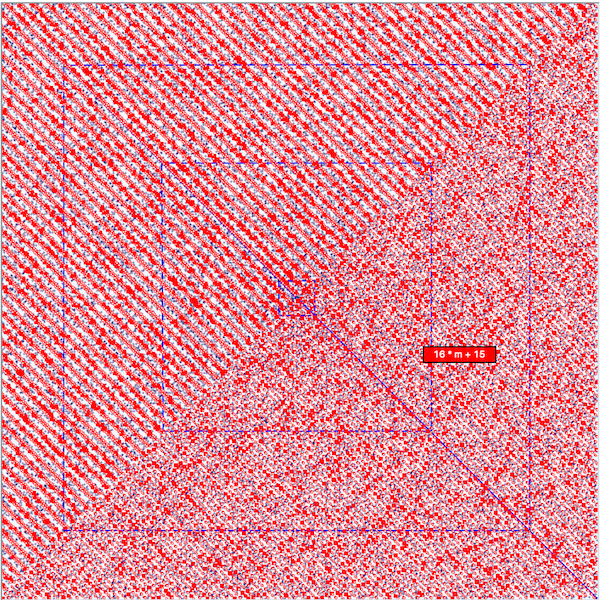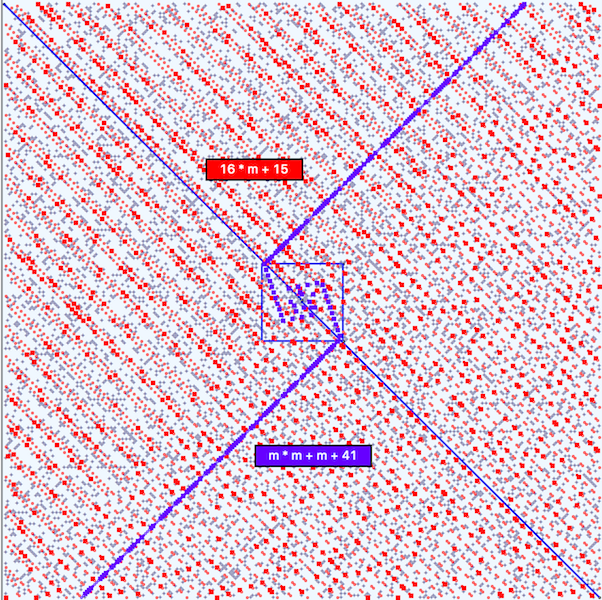Version 1 of Monster Prime Predicting Formula
Updated 2018-02-21 08:17:13 by arjenMonster Prime Predicting Formula
Many thanks to Gold for bringing this formula to my attention—
=====
gold31jan2018. Gauss-Legendre functions for number of primes has been loaded (c. 2017-05-28) in pending distribution of TCLLIB. Maybe coincidence, but sequence {7 11 13 14 } has been found on Sumerian tablet AO8862. Oeis {7 11 13 14} cited sequence property as Numbers n such that 16n+15 is prime. Tablet YBC10722 uses the input quantity 15 with the sequence {7 11 13 14}! Maybe your program could be used as example or exercise of the prime related functions in the TCLLIB.
16 * m + 15 — an amazing formula!!
I’ve seen references to this formula in the past, but have been focused on what I’ve thought of as Prime Predictive Formulae which produce Prime Rich trajectories along Ulam Spirals. In my way of thinking, an important aspect of any such formula was it’s Potency, that is the ratio of predicted primes to the total number of predictions that a formula gave. Thus, for instance, Euler’s formula y = m² + m + 41 when applied to the set of all Primes Less Than 500K (PLT500K), yields 433 primes out of 706 predictions, for a potency of .394, which seemed pretty good.
For the same set of Prime Numbers, (PLT500K), the above formula, 16 * m + 15 predicts 5197 Primes out of 31236 predictions, for a potency of 0.166. Although the Potency is not great, the fact that it calculates over 10 times as many primes is astounding and makes this simple equation Monstrously Prime Predictive.
The following figure shows what these prime numbers look like. The red squares represent the prime numbers and the small red circles are the non primes that the formula produces. If one draws a line through the center, from the lower left corner to the upper right corner, it appears that the upper left portion of the plot contains many more primes than does the lower right portion. This is very puzzling indeed and seems to be somewhat analogous to the notion of Prime Rich directions.
The following figure shows these primes plotted on the smaller set of Primes Less Than 100K (PLT100K). In this case, the formula predicts 1197 primes. Each red square is a prime number and the non primes are little red circles. The other Prime numbers are plotted as little blue + marks. Here the prime rich directions seem to be parallel to the Principle Axes. Euler’s formula is overlaid on the plot.
At first, it was puzzling why such a simple formula should predict so many prime numbers. More on this in the future.
Again, many thanks to Gold for pointing this formula out to me.
See also:
Primal Screens, Primal Screens— Part Two and New Prime number Browser
arjen - 2018-02-21 08:17:13
This Wikipedia page has some additional (and amusing) information: https://en.wikipedia.org/wiki/Formula_for_primes

